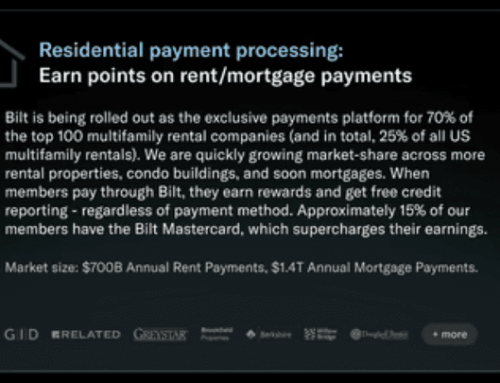The strength of U.S. consumers has kept the economy resilient, but recent developments raise the likelihood of a slowdown in 2025, according to a leading Federal Reserve official.
Frequently changing tariff policy and the threat of geopolitical disruption has consumers, businesses and investors in the U.S. mortgage market alike taking a cautious approach the rest of this year, Federal Reserve Bank of New York President John Williams said.
As a result, the economy will slow relative to 2024’s level, “but not anything worse than that,” he told attendees at the Mortgage Bankers Association’s secondary markets conference on Monday.
READ MORE: Lenders feel better, not exuberant, about housing market
“I think a lot of business leaders and households are kind of in a wait-and-see mode. They’re going to see how this plays out, and then maybe hold off on some decisions,” he said.
Evidence of a slowdown has not yet shown up in hard data to start the year, though, demonstrating the course the central bank set for interest rates, which have not been lowered by the Fed since late 2024, is largely working, he said.
“Monetary policy, where interest rates are, is doing exactly what we want it to do.”.
Still, he acknowledged that the forward-looking sentiment of many businesses surveyed by the Fed is moving “from a position of optimism to concerns, especially around tariffs.”
During the first quarter, the threat of tariffs altered business activity in a way that made it difficult to accurately gauge the economic impacts of Trump administration moves, he said, pointing out the surge in import rates to the fastest pace in close to 75 years.
“That’s not because suddenly the economy changed. It was really just frontloading the imports before tariffs,” he said.
READ MORE: What Ginnie Mae’s newest executive is planning for mortgages
Uncertainty surrounding the U.S. economy is catching the attention of the foreign investment community, many of whom are buyers of Treasurys and mortgage-backed securities, but talk has not appeared to result in a total retreat from the market. Still, the potential for volatility is weighing on investors’ minds.
“We have heard over the last few months some rumors or concerns about — do investors want to be so heavily invested in Treasurys or U.S.-adjacent securities? And I would say that mostly I think it’s people talking about talking about things,” Williams said.
Williams’ views on housing market challenges
While the wait-and-see sentiment of 2025 continues to make life challenging for home lenders, affordability remains probably the biggest obstacle the home finance community faces. Despite continued elevated prices and despite higher-than-historical interest rate levels, demand has not subsided, Williams pointed out.
Although federal policy can help with affordability efforts, much of the work to effectively alleviate the challenges of increasing supply ought to come on the state and local level, he said. Addressing them through a return to pre-pandemic strategies might serve as an effective starting point. .
“I do think this is basically a permanent aspect of our landscape,” he said regarding the housing supply shortage.
“I think there’s some national things that maybe could be done to help this, but I think a lot of the work is really more at the state level,” he added.


